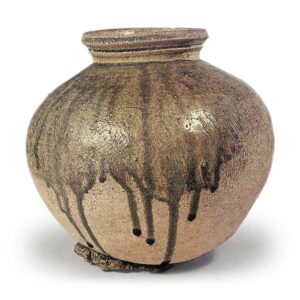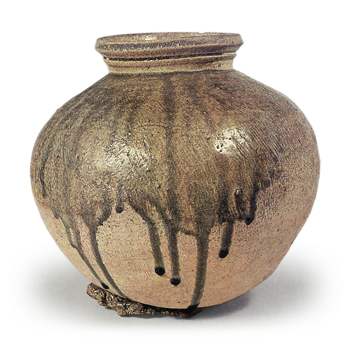
Excavated in the grounds of Tōkō-in, Kisarazu-shi, Chiba, 7th century.
Kisarazu-shi, Chiba, 7th century.
Height 27.4cm, mouth diameter 13.4cm, body diameter 23.6cm.
Tokyo National Museum
This is one of the most common round-bottomed jars with a short neck. The mouth rim is beveled, and there is a single, slightly protruding step below the rim. This type of mouth design is a degenerative form of the two-tiered mouth rim unique to eastern Japan, which eventually lost the tiers and became a single-tiered mouth rim in the next stage. Based on the form of the mouth rim, we can place the date of production of this jar in the mid-7th century. The body is round-bottomed with a rolled-up cord, and is molded with a tapering technique, leaving the tap marks intact on the surface. The body is made of a high-quality, nearly white clay, which has been thoroughly tempered by reduction firing, and is covered with a thick, bright green natural glaze from the mouth rim to the shoulder, which overflows and runs down to the lower half of the body. Part of the kiln floor from the firing process is fused to the bottom. Although it is a common everyday vessel, it is highly aesthetic.



